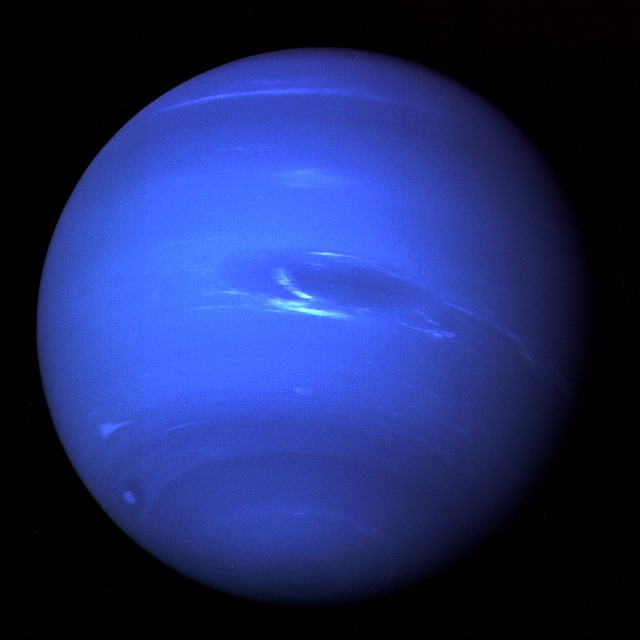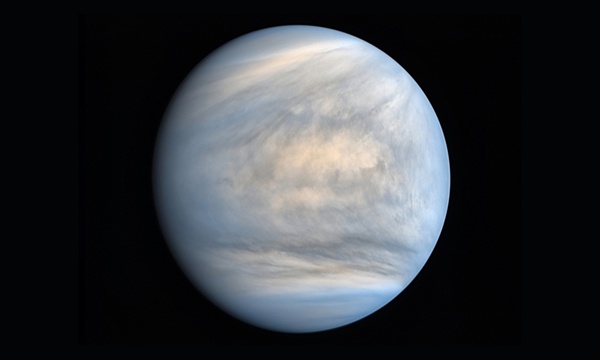*This post may contain affiliate links. This means we may make a commission if you purchase an item using one of our links*
The main differences between Neptune and Venus is that Neptune is a gas based ice giant that is the 8th farthest planet from the Sun, has 14 moon, is roughly 4 times bigger than Venus and is a deep blue color whilst Venus is a yellowy white planet that is the 2nd closest planet to the Sun and, is both the hottest and brightest terrestrial planet in our solar system.
For a more thorough breakdown of the multitude of other differences and similarities between the two, continue reading as it will be covered in more detail below.
What Is The Planet Neptune?
Table of Contents

Neptune is the 8th farthest planet from the Sun and ranks among the bigger planets in our solar system. As the 8th farthest planet from the Sun, it does take Neptune a very long time to complete 1 orbital cycle around the Sun.
This takes 165 years to complete which is far longer than the 16 hours needed to complete 1 full day/full spin around the axis.
In regards to its composition, Neptune is mostly made up of a thick swath of water closer to the center, methane, ammonia, hydrogen and helium molded around its Earth sized core.
As a result of the excess amount of methane and the inclusion of another undiscovered element within the atmosphere, Neptune’s color is a far deeper blue than the likes of Uranus, which also has a methane based atmosphere.
The planet is 49,244km in diameter, making it roughly 4 times Earth’s diameter, and would allow around 57 Earth sized planets to fit inside it. This also makes Neptune the 4th largest planet in our solar system.
Neptune is very cold, which is mostly down to its distance from the Sun, where its atmospheric temperature sits between -220 to -230 degrees Celsius. Its core is far hotter coming in at 5,100 degrees Celsius and is the very likely cause for the liquid water present within the planet.
Subsequently, the erratic temperature and gaseous composition of Neptune, is what constitute towards its turbulent behavior.
In fact Neptune has the fastest winds in our solar system, producing some that eclipse speeds of 2,000km per hour. The fastest winds on Earth would only be a fifth of these speeds at most.
At this moment in time we have discovered 14 moons orbiting Neptune and have also observed 5 thinner rings surrounding the ice giant.
What Is The Planet Venus?

Venus is the 2nd closest planet to the Sun and is often regarded as Earth’s sister planet. It’s very close to our Earth in size where its diameter is 12,104km. This is just over 600km less wide than our home planet.
Unlike all the planets further outside the Sun’s orbit, Venus and even mercury have no moons orbiting it. The most probable reason for this is due to its closer proximity to it, which means that smaller objects orbit the Sun as opposed to Venus.
Venus is also the hottest planet in our solar system where its surface temperature is 475 degrees Celsius. This is due to a number of factors, like the thicker atmosphere, close proximity to Sun, the reasons for which have been explained in more detail here.
It’s core is hot too, similar to that of the ice giants and Earth, where it stands at 5,200 degrees Celsius.
As a result of this thicker atmosphere, Venus is also able to reflect a lot more of the light the Sun projects at it, making it both the hottest and brightness planet in our solar system. This is why for the longest time, and even till this day Venus is often referred to as the morning or evening star.
The thicker atmosphere is mostly compromised of carbon dioxide, and thick clouds of sulfuric acid. This does result sulfuric acid rain on the planets surface, which of course is very corrosive.
Being so close to the Sun also mean its orbital cycle is much shorter. It takes Venus 225 days to complete a full cycle, on the contrary a single day is actually longer than this where it takes around 243 days for a full rotation around its axis.
This is partially down to its distance from the Sun and the thick atmosphere surrounding this terrestrial planet. The axial tilt on Venus is also different from the other planets in our solar system where it is practically straight at 3 degrees.
All in all this is certainly one of the most interesting planets in our solar system and in many peoples eyes, could very well have supported life in the past based on how close its shape and size is to that of Earth.
How Are Neptune And Venus Similar?
Both of these planets have very few similarities but, some are still present. They include the following:
- Both planets orbit the Sun in a circular pattern.
- Both have a hotter central core.
- Both are a spherical in shape.
Differences Between Neptune And Venus
In regards to the differences, they include the following:
- Neptune has 5 rings whilst Venus has 0
- Venus has 0 moons whilst Neptune has 14
- Neptune is the 8th farthest planet from the Sun whilst Venus is 2nd. This means it will take Neptune 165 years to orbit the Sun whereas Venus can do this in 225 days.
- In regards to their days, Venus has day that’s even longer than its orbit around the Sun. This is 243 days as opposed Neptune’s 16 hours.
- Venus has a 3 degree axial tilt whilst Neptune’s axial tilt is 28.32 degrees.
- Neptune is the colder of the two planets with a temperature of -220 to -230 degrees whereas Venus’ temperature is 475 degrees.
- Neptune has the fastest winds in our solar system where its speed can reach 2,000 km/p as opposed to Venus’ wind speeds of around 360 km/p.
- Venus is the brightest planet in our solar system.
- Neptune is a gas based ice giant whilst Venus is rocky terrestrial planet.
- Neptune is far bigger with a diameter of 49,244km. Venus is only 12,104km in diameter.
- Venus is a yellowy white color whilst Neptune is a deep blue color.
- Neptune has a stronger magnetic field and gravitational field.
- Venus has a mass of 4.867 × 10^24 kg whereas Neptune is far heavier with a mass of 1.024 × 10^26 kg
Summary
Venus and Neptune have a vast number of differences between each other, whether it be their size, temperature, brightness and proximity to the Sun.
In the end of the day one is a gas based ice giant whilst the other a scorching hot terrestrial planet so, it does make sense that there is more different between the two than similar.

